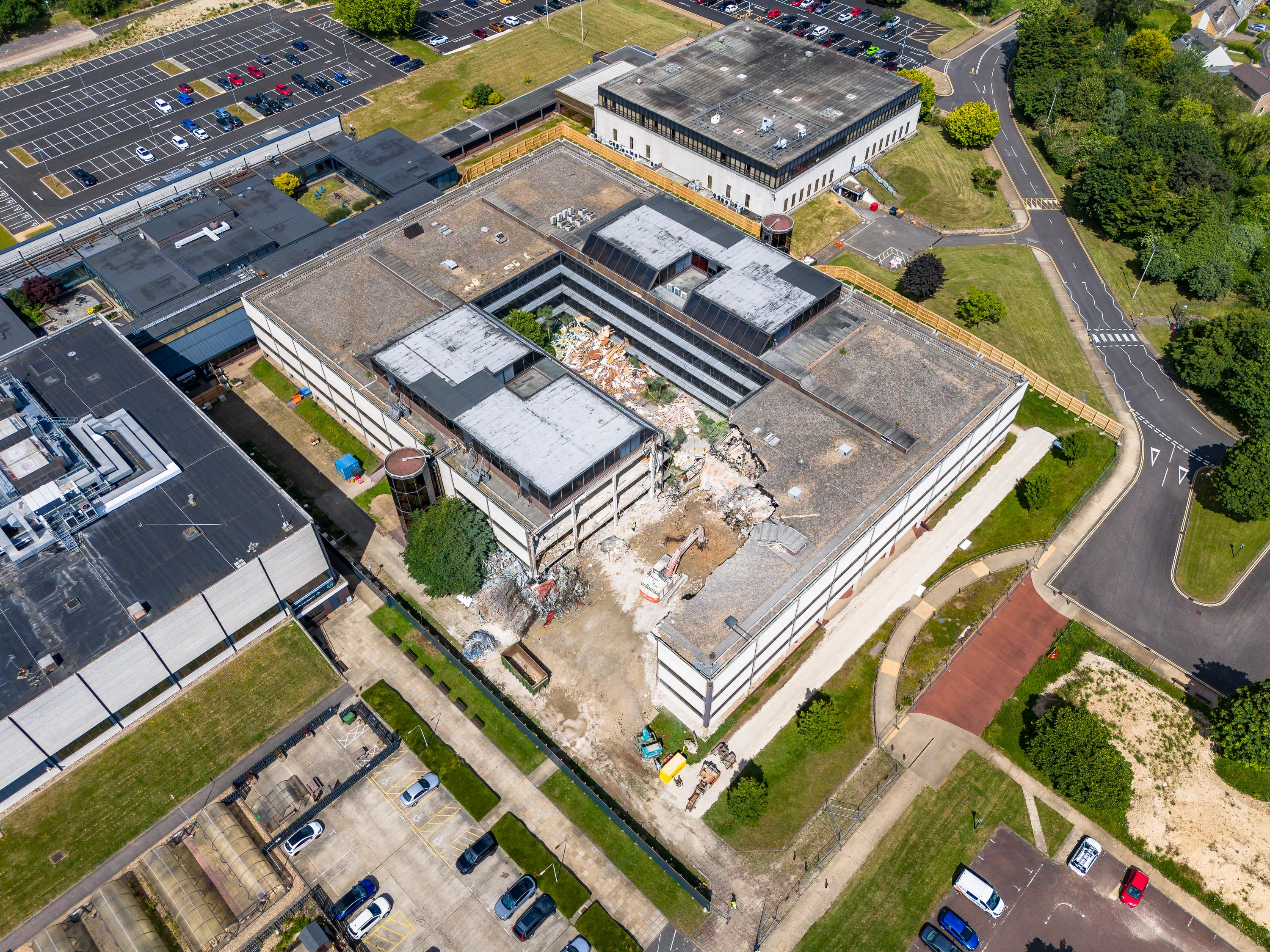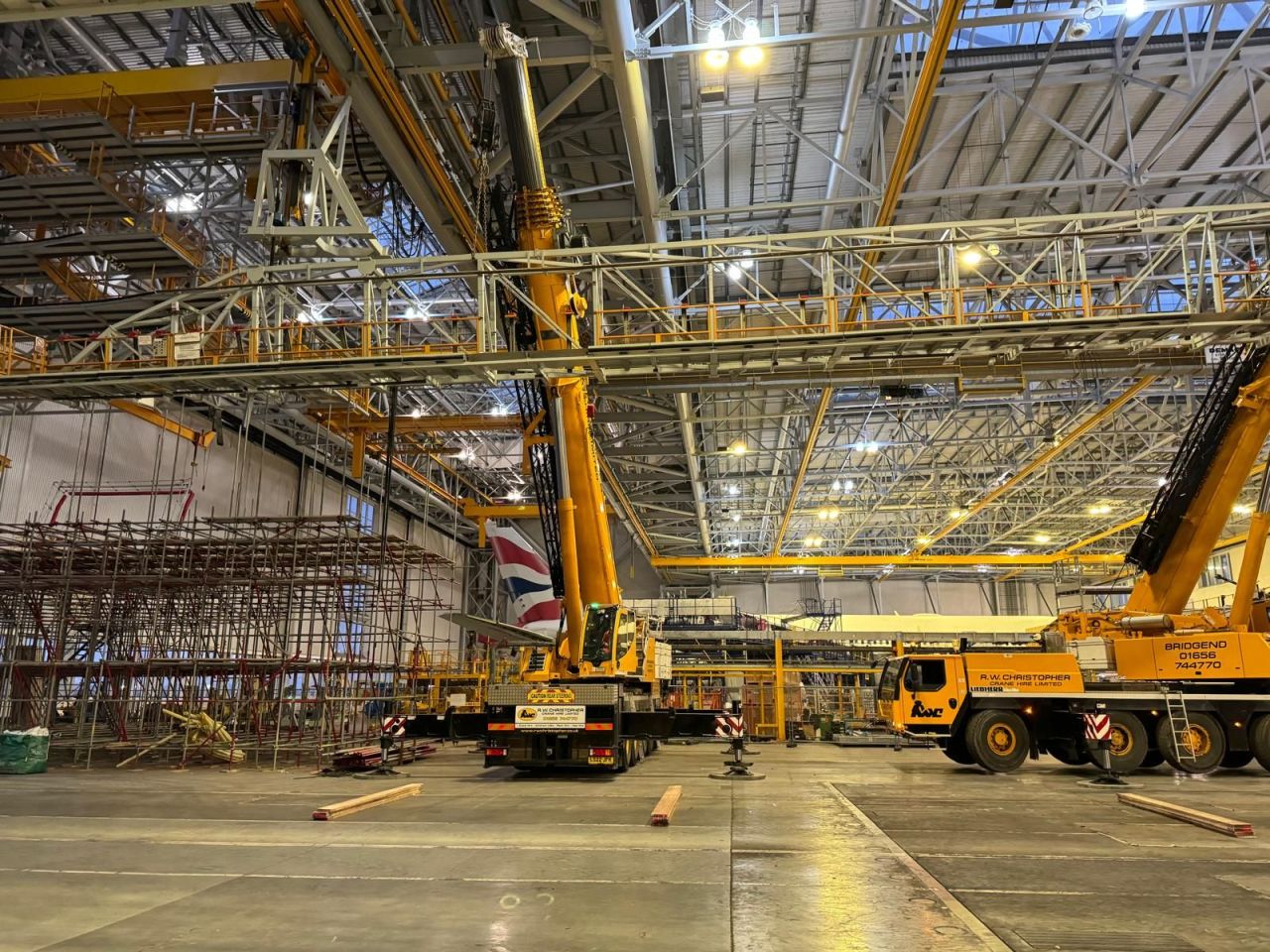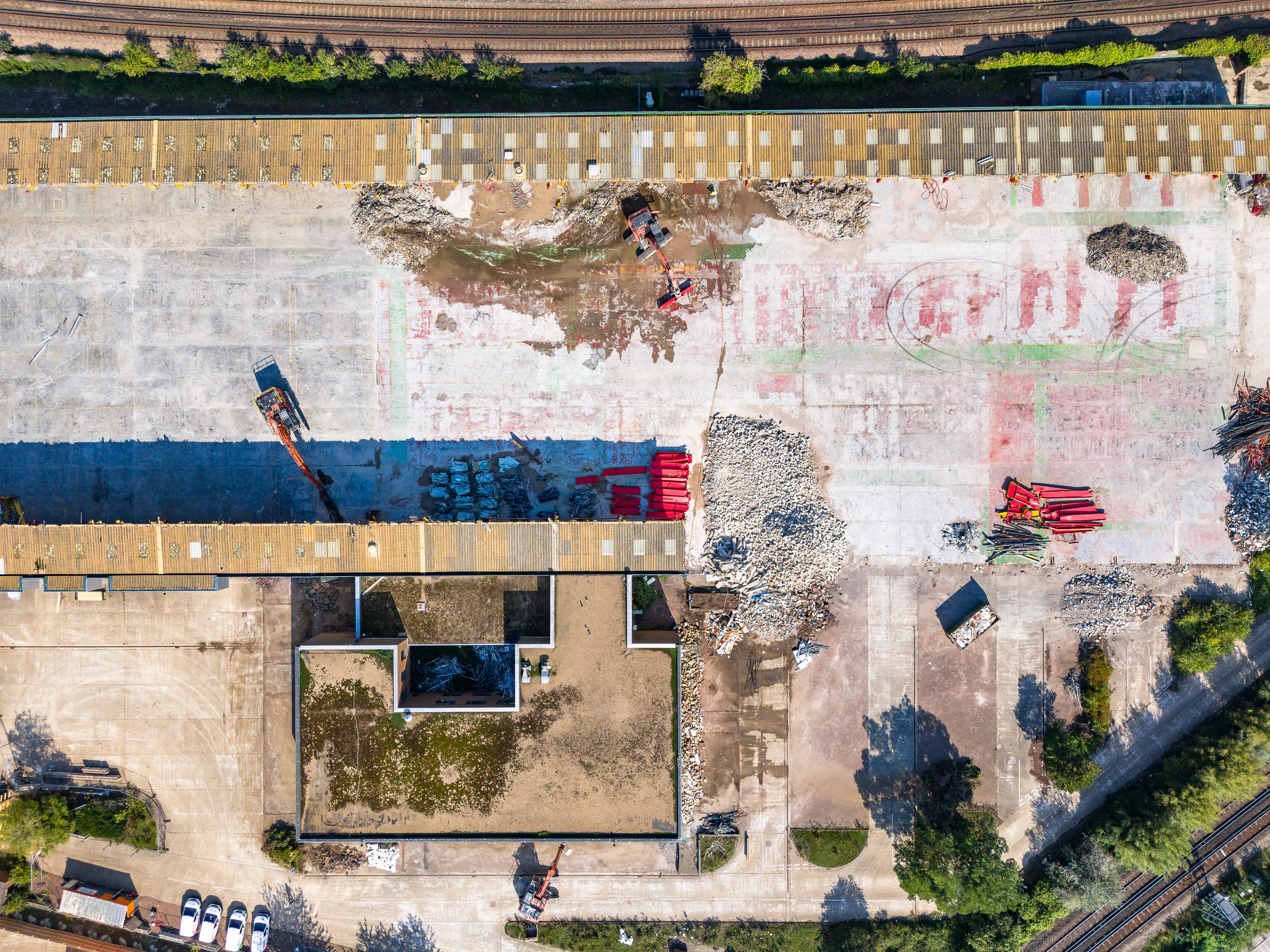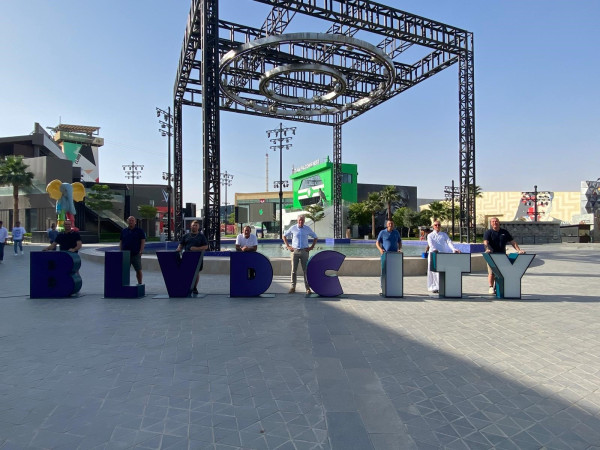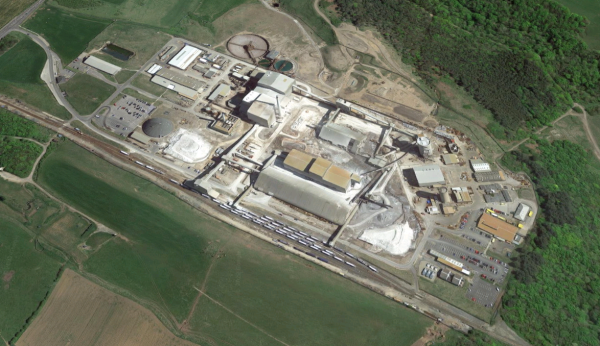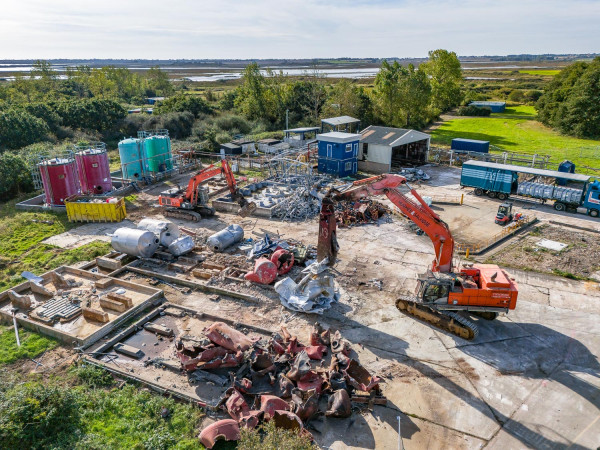Graven Hill, Bicester
Hughes and Salvidge were appointed the role of Principal Contractor for the demolition works at Graven Hill Bicester. The site consisted of four large vacant warehouses and a sub-station, totaling approx. 41,831 sq.m.
Outline Scope of Works
- Professional lead-in.
- Site establishment.
- Soft-strip.
- Drain-down and COSHH sweep through buildings.
- Demolition of units D1, D2, D3 & D7.
- Removal of slabs and foundations for D1, D2, D3, D7 & D10.
- Crushing of site won arisings to 6F2 grade.
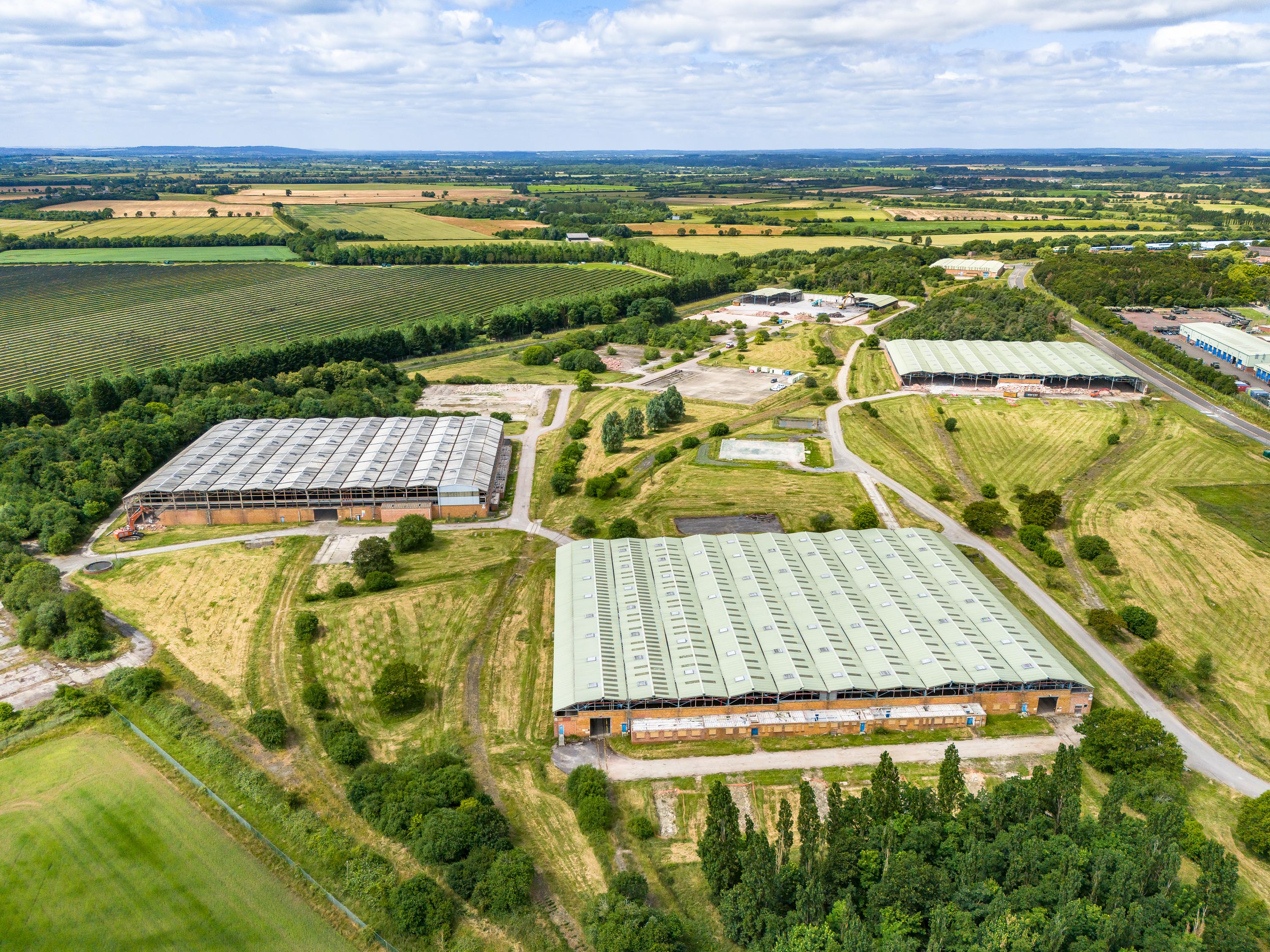
With the site buildings classified as bat roosts, working with ecologists was critical to allow for the smooth completion of the works. H&SL worked efficiently in conjunction with a bat license and watching brief of the ecologists to complete the works with zero issues. A reservoir containing PFOS was also identified on site, with the team required to monitor and manage this throughout the works to ensure no wider exposure to the environment.
Throughout the duration of the works, service diversions were required to ensure the safety of the site team, as well as allowing the adjacent solar farm to remain operational. Our teams work with SSE stakeholders ensured there were zero incidents or triggers throughout the project. Completion of external audits and internal SHEQ reviews meant the team was always ahead of the required standards for safety on site.
Asbestos removal and soft strip
All asbestos removal works were completed prior to any soft strip and structural demolition of buildings. The soft strip phase involved the removal of all fixtures & fittings, furniture, carpet tiles, false ceilings, timber, services, cables, light fittings and insulation/lining boards within the structures to allow for the demolition, and in order to minimise the amount of potential contaminants in the material to be crushed.
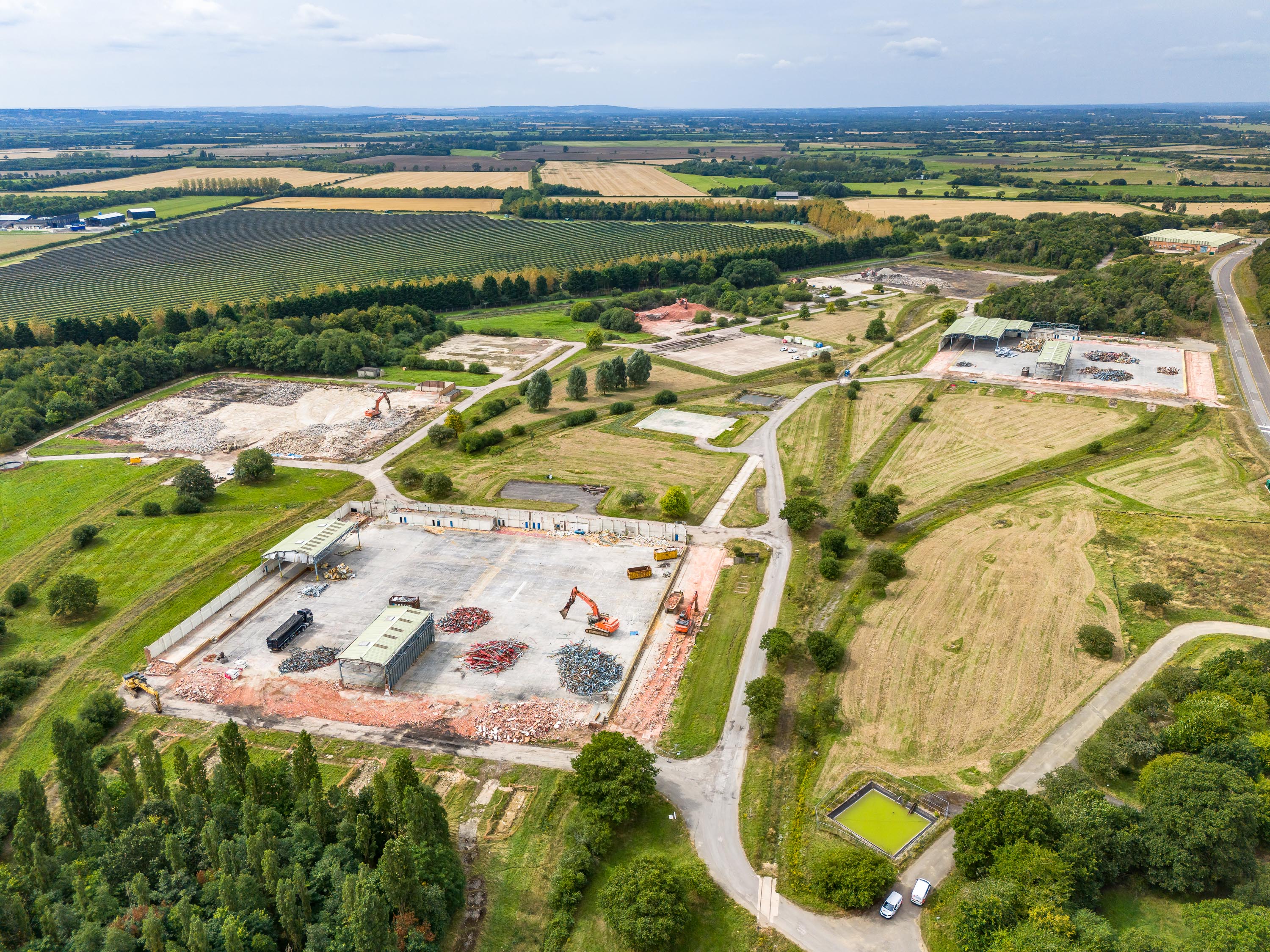
Superstructure Demolition
Capping removal to the ridges happened under the watching brief of RPS. The excavator will peel of the first capping run and lay the cap on the floor for RPS to inspect. Then the roof sheets were removed. Bottom Chord Truss’ were snipped at the eaves of the columns, then the top truss chord was cut down at the eaves. The purlins that once supported the already removed roof sheets were then snipped down. Then the process of checking the capping ridge will happen again and the process repeated.
Arisings were processed and graded, and left site their correct waste streams. Waste left site as it is accumulated, to keep the site tidy. Secondary plant processed the arisings so the demolition continued to progress under watching brief.
Substructure Demolition
Once a significant amount of ground bearing slab had been exposed, machines fitted with impact hammers and buckets began to remove the slab and foundations. A machine fitted with an impact hammer started by puncturing the slab and foundations to break them up to moveable sections. A machine fitted with a bucket then lifted and stockpiled sections ready for further processing. Machines fitted with pulverisers processed arisings further to separate concrete from reinforcing bar, and loaded away respective materials.
All excavations were backfilled progressively after foundation removal. The area was graded to surrounding site contours, and the footprint tracked in by machine, leaving a flat site.
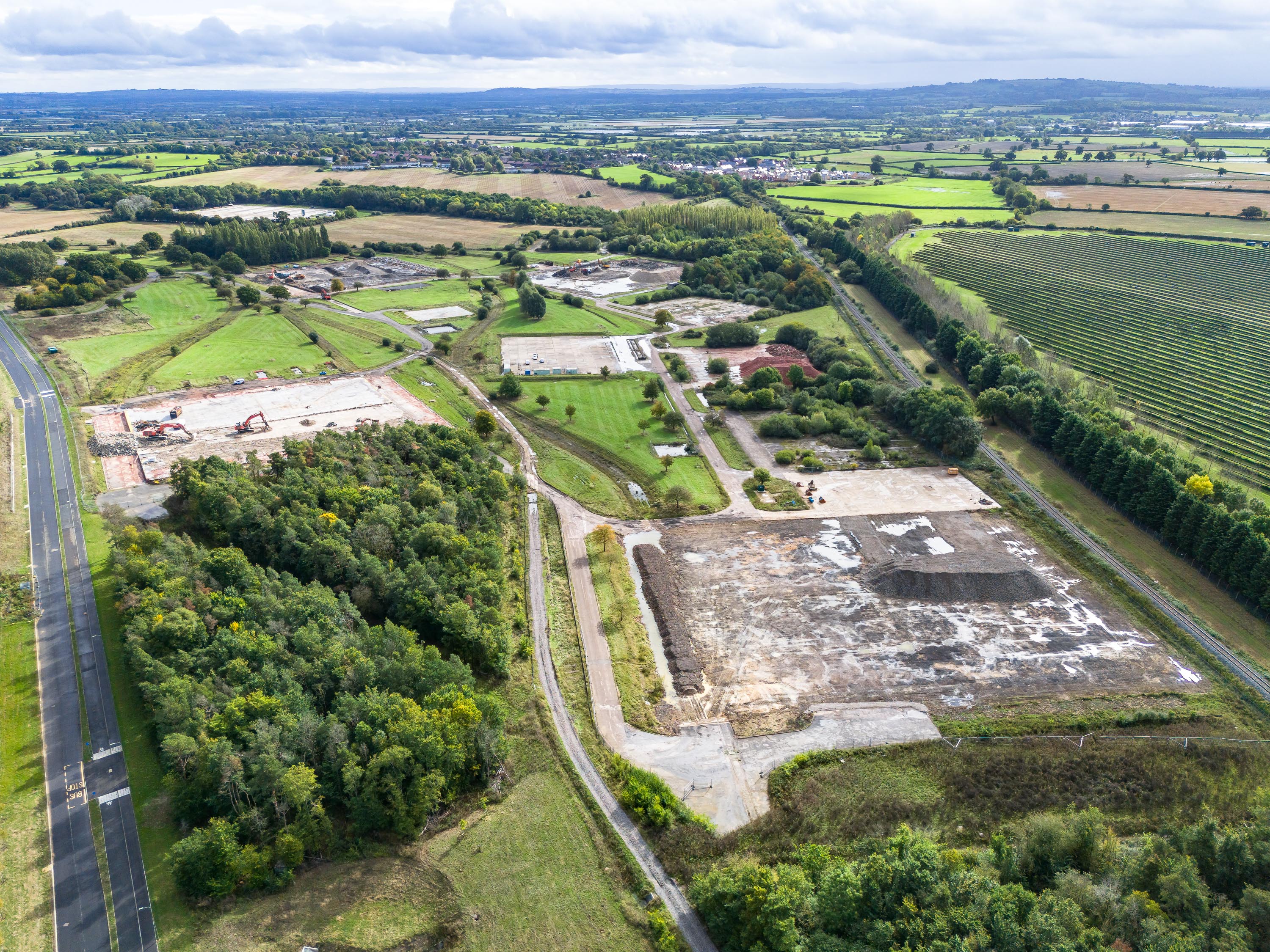
Crushing
Site-won hard inert arisings were crushed on site to produce aggregate for re-use.
Works commenced by loading the crusher using a 360° excavator. Concrete/hardcore was loaded into the hopper, which was hydraulically fed into the crusher. The crushed material fell onto the conveyor where any reinforcement bar or other ferrous metal was removed by a hydraulic belt magnet fitted above the main conveyor. The crusher then discharged crushed aggregate and metal into two separate stockpiles. Metal was periodically loaded away into metal bins, and aggregate was regularly cleared and stockpiled in the client’s desired location. Aggregate stockpiles were formed with a suitable angle of repose to ensure they remained stable and to mitigate any land-sliding of aggregate.
The crusher is fitted with a dust suppression system, whereby water is sprayed onto the discharge conveyor to minimise dust. All areas were left clean and tidy on completion.

